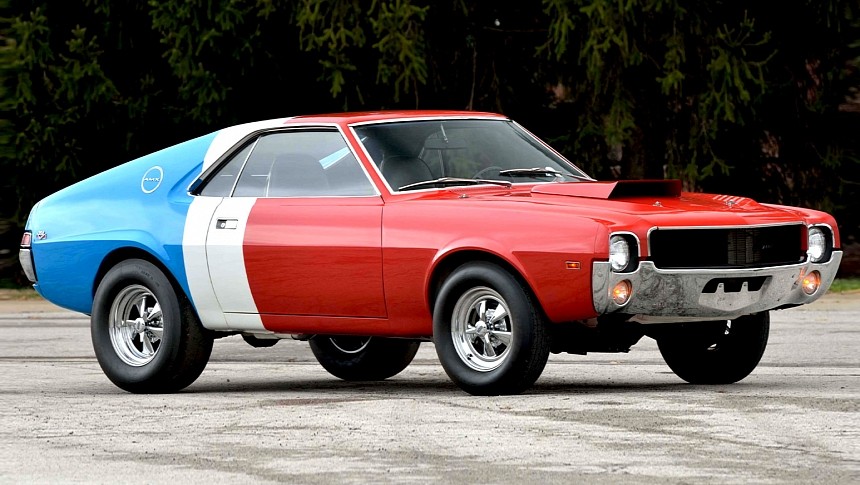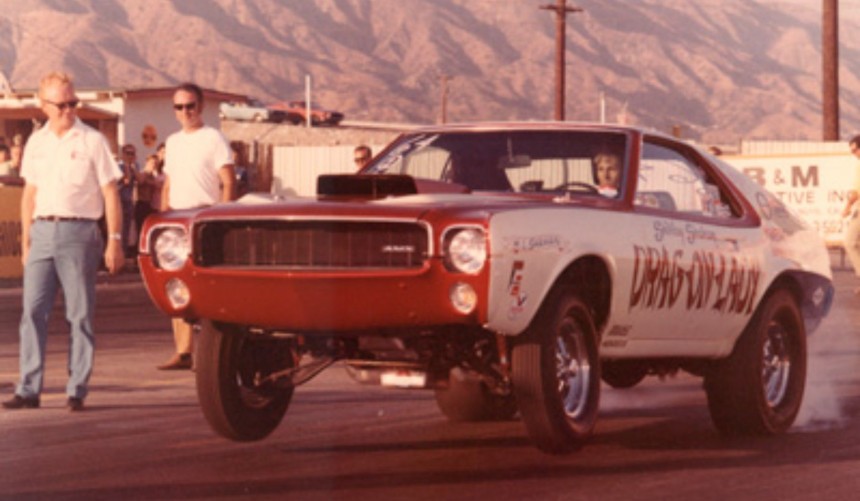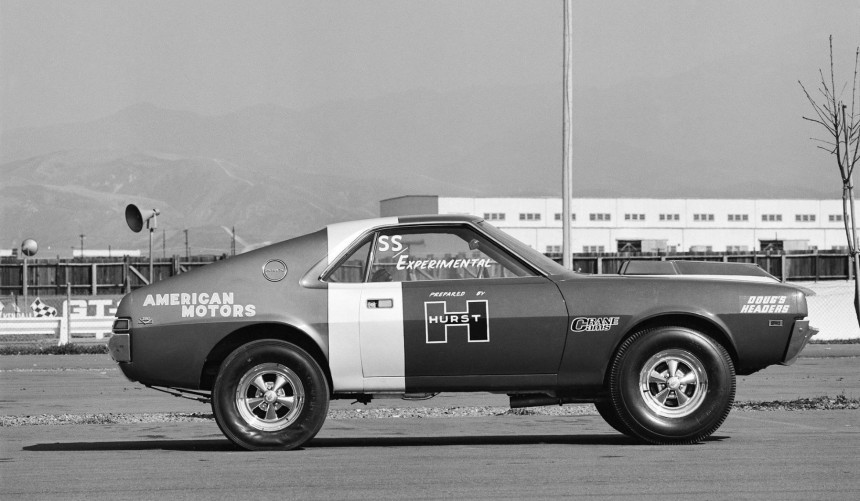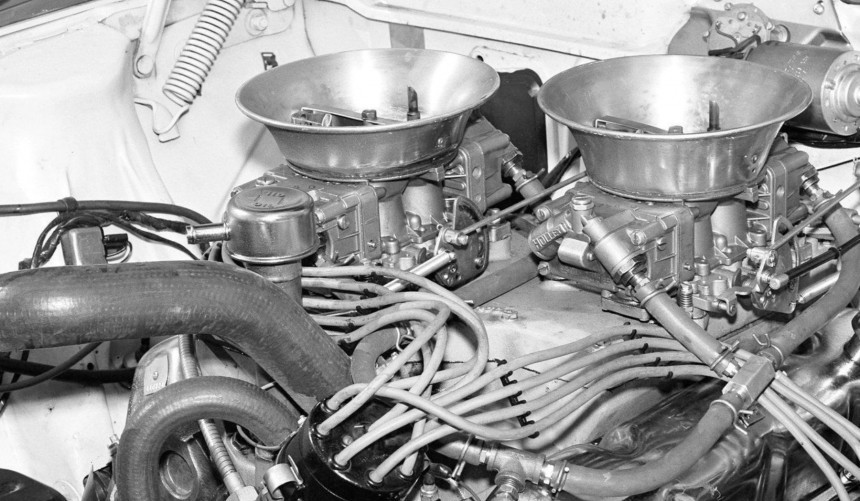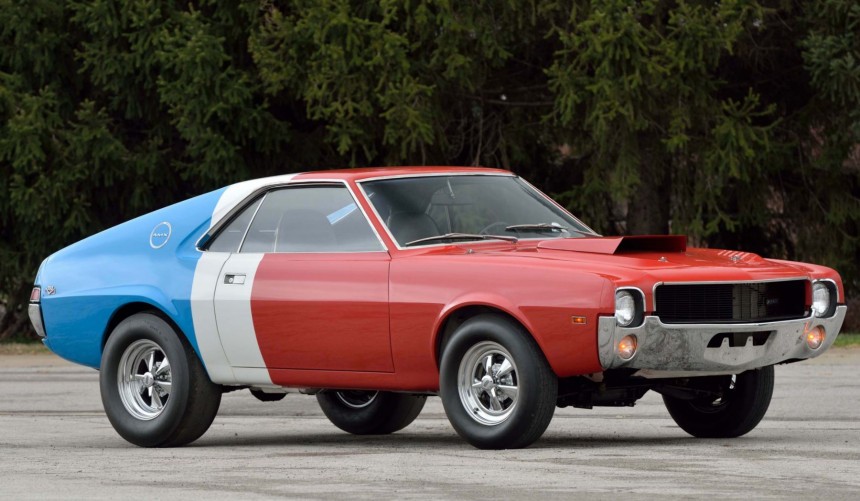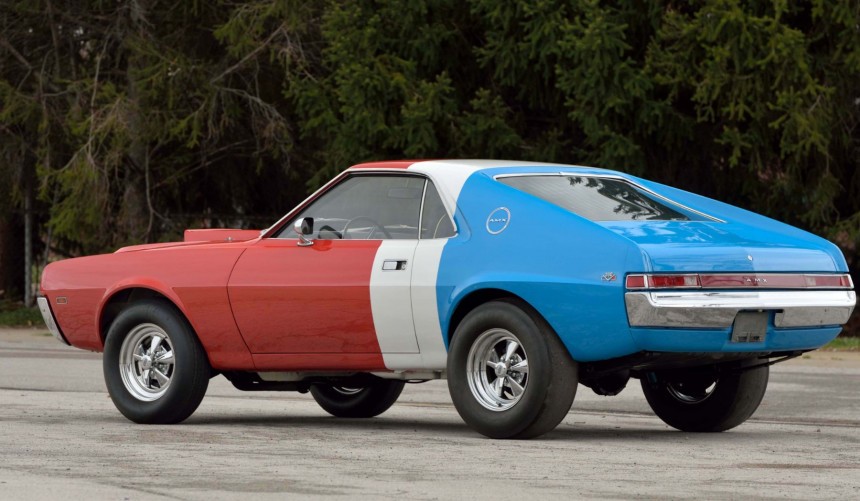At first, few took it seriously, but once it hit the strip and started shattering records, this purposely-built drag car became a fan favorite among the muscle car crowd.
The American Motors Corporation was born on May 1, 1954, after the merger of the Nash-Kelvinator Corporation and the Hudson Motor Car Company.
While Hudson used to be a pioneer in American motorsport, dominating NASCAR during the early years of the competition, AMC didn't keep the flame burning. The company initially went by the motto: "The only race we care about is the human race" and developed economy cars that had nothing to do with performance. And it went well for the first few years.
But, with the market's appetite for high-horsepower machines growing during the first part of the 1960s, AMC fell far behind Detroit's Big Three in terms of sales and reputation. It became known for building cars tailored for grandparents, so younger buyers usually stayed far away from its dealerships.
In 1965, management sounded the alarm and began shifting the company's focus toward exciting products that would attract younger buyers. It took several years of development, but by the summer of 1968, AMC's model lineup included a rival for the Mustang in the shape of the Javelin pony car and the closely-related AMX two-seater, which became a viable, cost-effective alternative to Chevy's Corvette. Both models were available with a wide range of options, including the X-code 390-ci (6.4-liter) V8, which delivered 315 hp and 425 lb-ft (576 Nm) of torque.
Although it arrived a bit late to the muscle car party, AMC was heading in the right direction. Nevertheless, it needed to raise the excitement bar higher in order to mount a serious challenge for GM, Ford, and Mopar muscle.
Thanks to newly-appointed performance manager Walt Czarnecki - who came over from Hurst's Research division in Ferndale, Michigan - AMC continued to flex its muscles on both the street and the strip. For the street, they joined forces with Czarnecki's former employer and developed the legendary 1969 SC/Rambler. Then, for the strip, the AMC/Hurst partnership focused on building a special version of the AMX that could compete in the National Hot Rod Association's popular Super Stock class.
To build and test the first AMX Super Stock prototype, the company enlisted the help of accomplished drag racer Shirley "The Drag-On Lady" Shahan and her husband, engine builder extraordinaire H. L. Shahan.
H.L. went to work on transforming the stock 1969 AMX into a legitimate Super Stock contender, and thanks to the car's solid, factory-built platform, he didn't have to re-engineer the entire thing.
He spent most of the time working on the 390 V8, which he upgraded with higher compression ratio JE pistons, Crane cylinder heads complete with a solid roller camshaft, an Edelbrock dual-quad aluminum intake, Doug's tubular exhaust headers, a Mallory dual-point distributor, and a pair of Holley 650 carbs.
The already-lightweight chassis required little modifications. It gained sturdier suspension components, a new crossmember that allowed easy access to the oil pan, and a Twin-Grip AMC 20 rear axle with 4.44:1 gears.
Tipping the scales at 3,050 lbs (1,383 kg), the prototype didn't require lighter body panels, and as soon as it hit the strip with The Drag-On Lady behind the wheel, it effortlessly delivered 11-second runs.
With the prototype proving its worth, AMC delivered 52 body-in-white AMX units to Hurst Performance Research's Detroit facility, where they were converted to Super Stock spec.
The Hurst-prepared cars were all equipped with four-speed manual transmissions equipped with Hurst shifters. Finished in either Frost White or a patriotic red, white, and blue scheme, they featured most of the upgrades received by the prototype, save for engine blueprinting and the solid roller Crane cams, which were replaced with stock 390 variants. The idea behind this move was to allow dealers and buyers to fit the cams they preferred, then blueprint the engines themselves.
AMC also rated its output at 340 hp so it could run in the NHRA's Super Stock/G class, where it would have obliterated the competition. In reality, a well-prepped engine was capable of more than 500 hp when put on a dyno - something that NHRA officials became aware of.
Therefore, they rated the engine at 420 hp and homologated the car for the more competitive SS/E class. Later, rule changes would send it to SS/D and SS/C classes, but that didn't stop the AMX Super Stock from proving itself.
The Super Stock - which came with a competitive $5,994 ($50,113) price tag - was not marketed as a ready-to-race drag weapon but a semi-finished base car that could be easily tailored to the driver's preference.
In part because of this, sales were initially slow, and many Super Stocks remained in dealerships for months. Then, factory- and dealer-backed teams started competing in more races, shattering many class speed and ET records.
The AMX Super Stock went from underdog to fan-favorite, and soon, all 52 cars were sold. They continued to dominate the class in the following seasons, becoming drag racing legends.
As it turned out, 1969 marked a turning point in the history of AMC, which managed to reinvent itself and become one of the leading muscle car manufacturers. On the street, the SC/Rambler was a resounding success, laying the groundwork for the 1970 Machine, and the AMX Super Stock boosted the company's image even further on the strip.
Although all 53 cars (including the prototype) saw serious race action throughout the years, as many as 40 are still around today. Although not as famous as similar Ford, GM, or HEMI-powered Mopar drag weapons, they're still highly sought-after on the collectors market.
Last year (2022), an example fully restored to the showroom condition went under the hammer at a Mecum auction, fetching $181,500. However, a well-kept, highly-original example with a winning resume can be worth much more than that.
The 1969 AMC AMX Super Stock defied all odds and became both a drag racing and a muscle car icon. It was perhaps the ultimate drag racing underdog, proving that a small yet determined carmaker could hang with the big boys in the high-performance world.
In the YouTube video below by If This Car Could Talk, you can get to know the last Super Stock ever produced, which was recently restored by its owner, Dan Curtis.
While Hudson used to be a pioneer in American motorsport, dominating NASCAR during the early years of the competition, AMC didn't keep the flame burning. The company initially went by the motto: "The only race we care about is the human race" and developed economy cars that had nothing to do with performance. And it went well for the first few years.
But, with the market's appetite for high-horsepower machines growing during the first part of the 1960s, AMC fell far behind Detroit's Big Three in terms of sales and reputation. It became known for building cars tailored for grandparents, so younger buyers usually stayed far away from its dealerships.
In 1965, management sounded the alarm and began shifting the company's focus toward exciting products that would attract younger buyers. It took several years of development, but by the summer of 1968, AMC's model lineup included a rival for the Mustang in the shape of the Javelin pony car and the closely-related AMX two-seater, which became a viable, cost-effective alternative to Chevy's Corvette. Both models were available with a wide range of options, including the X-code 390-ci (6.4-liter) V8, which delivered 315 hp and 425 lb-ft (576 Nm) of torque.
Although it arrived a bit late to the muscle car party, AMC was heading in the right direction. Nevertheless, it needed to raise the excitement bar higher in order to mount a serious challenge for GM, Ford, and Mopar muscle.
Joining forces with Hurst and drag racing's most famous lady
Before it unleashed the AMX on public roads, AMC hired land speed record holder Craig Breedlove and his "Spirit of America" team to help promote the car. With the help of Traco Engineering, they put together two specially-prepared cars, then set 106 world speed and endurance records at Goodyear's track in Texas. It was a terrific marketing effort for a company with a fraction of the budget and manpower of its Detroit-based rivals. However, this was just the beginning.
Thanks to newly-appointed performance manager Walt Czarnecki - who came over from Hurst's Research division in Ferndale, Michigan - AMC continued to flex its muscles on both the street and the strip. For the street, they joined forces with Czarnecki's former employer and developed the legendary 1969 SC/Rambler. Then, for the strip, the AMC/Hurst partnership focused on building a special version of the AMX that could compete in the National Hot Rod Association's popular Super Stock class.
To build and test the first AMX Super Stock prototype, the company enlisted the help of accomplished drag racer Shirley "The Drag-On Lady" Shahan and her husband, engine builder extraordinaire H. L. Shahan.
From prototype to limited-series drag weapon
He spent most of the time working on the 390 V8, which he upgraded with higher compression ratio JE pistons, Crane cylinder heads complete with a solid roller camshaft, an Edelbrock dual-quad aluminum intake, Doug's tubular exhaust headers, a Mallory dual-point distributor, and a pair of Holley 650 carbs.
The already-lightweight chassis required little modifications. It gained sturdier suspension components, a new crossmember that allowed easy access to the oil pan, and a Twin-Grip AMC 20 rear axle with 4.44:1 gears.
Tipping the scales at 3,050 lbs (1,383 kg), the prototype didn't require lighter body panels, and as soon as it hit the strip with The Drag-On Lady behind the wheel, it effortlessly delivered 11-second runs.
With the prototype proving its worth, AMC delivered 52 body-in-white AMX units to Hurst Performance Research's Detroit facility, where they were converted to Super Stock spec.
Purposely downplaying its power potential
AMC also rated its output at 340 hp so it could run in the NHRA's Super Stock/G class, where it would have obliterated the competition. In reality, a well-prepped engine was capable of more than 500 hp when put on a dyno - something that NHRA officials became aware of.
Therefore, they rated the engine at 420 hp and homologated the car for the more competitive SS/E class. Later, rule changes would send it to SS/D and SS/C classes, but that didn't stop the AMX Super Stock from proving itself.
A slow start followed by a record-breaking season
In part because of this, sales were initially slow, and many Super Stocks remained in dealerships for months. Then, factory- and dealer-backed teams started competing in more races, shattering many class speed and ET records.
The AMX Super Stock went from underdog to fan-favorite, and soon, all 52 cars were sold. They continued to dominate the class in the following seasons, becoming drag racing legends.
The Super Stock today
Although all 53 cars (including the prototype) saw serious race action throughout the years, as many as 40 are still around today. Although not as famous as similar Ford, GM, or HEMI-powered Mopar drag weapons, they're still highly sought-after on the collectors market.
Last year (2022), an example fully restored to the showroom condition went under the hammer at a Mecum auction, fetching $181,500. However, a well-kept, highly-original example with a winning resume can be worth much more than that.
The 1969 AMC AMX Super Stock defied all odds and became both a drag racing and a muscle car icon. It was perhaps the ultimate drag racing underdog, proving that a small yet determined carmaker could hang with the big boys in the high-performance world.
In the YouTube video below by If This Car Could Talk, you can get to know the last Super Stock ever produced, which was recently restored by its owner, Dan Curtis.
